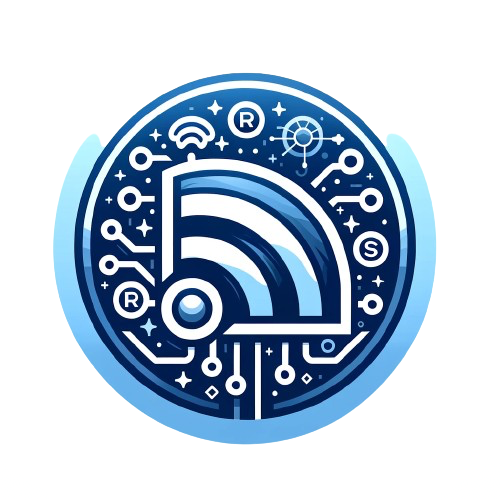
Key Trends Shaping The Future Of Remote Learning
In today’s rapidly advancing digital landscape, remote learning has emerged as a transformative force in education, reshaping traditional notions of teaching and learning. As we delve into the dynamic realm of remote learning, it’s essential to explore the myriad trends and innovative technologies driving its evolution. This comprehensive exploration will illuminate the path forward, shedding light on the opportunities and challenges that lie ahead.
Exploring The Latest Trends In Remote Learning
Remote learning is a vibrant and ever-evolving ecosystem, characterized by a multitude of trends shaping its trajectory. From the rise of personalized learning pathways to the integration of immersive technologies, educators and learners alike must stay informed about these trends to leverage the full potential of remote education.
1. The Impact Of Technology On Education
Technology serves as the cornerstone of remote learning, facilitating transformative educational experiences that transcend traditional boundaries. Virtual Reality (VR) and Augmented Reality (AR) technologies, for instance, offer immersive learning environments that engage students in dynamic and interactive ways, enhancing their understanding and retention of complex concepts.
2. Harnessing The Power Of Adaptive Learning
Adaptive learning systems, powered by Artificial Intelligence (AI), play a pivotal role in personalizing the learning experience for each student. By analyzing data on student performance and preferences, these systems dynamically adjust educational content and interventions, catering to individual learning styles and needs. This personalized approach fosters greater engagement and academic success among students, empowering them to achieve their full potential.
3. Enhancing Accessibility Through Mobile Learning
Mobile learning has revolutionized education by providing learners with anytime, anywhere access to educational resources via smartphones and tablets. Mobile apps and platforms offer flexibility and convenience, enabling students to engage in learning activities on their own terms. This accessibility not only breaks down barriers to learning but also accommodates the diverse needs and lifestyles of learners in today’s fast-paced world.
4. Fostering Collaboration In Online Environments
Collaborative online environments create a sense of community and facilitate meaningful interaction among students and instructors. Discussion forums, group projects, and real-time communication tools enable collaborative learning experiences, fostering teamwork and critical thinking skills essential for success in the digital age.
5. Leveraging Data Analytics For Informed Decision-Making
Data analytics provide educators with valuable insights into student progress and learning outcomes. By analyzing data on learning behaviors and performance, instructors can identify trends, pinpoint areas for improvement, and tailor instructional strategies to meet students’ needs effectively. This data-driven approach optimizes teaching effectiveness and enhances student engagement, ultimately leading to improved learning outcomes.
6. Embracing Microlearning For Efficient Knowledge Acquisition
Microlearning, characterized by the delivery of educational content in short, focused bursts, addresses the challenges of information overload in today’s digital age. Bite-sized lessons cater to modern attention spans and enable learners to acquire knowledge efficiently. By breaking down complex topics into digestible chunks, microlearning promotes retention and engagement, making learning more accessible and manageable.
7. Boosting Efficiency Through eLearning
eLearning offers unparalleled opportunities for enhancing efficiency in education. By leveraging digital platforms and resources, learners can access a wealth of educational materials and resources with ease. Whether it’s asynchronous learning modules or interactive simulations, eLearning enables students to progress at their own pace, maximizing productivity and flexibility. Moreover, the ability to revisit and review course materials as needed fosters deeper understanding and retention of key concepts, contributing to overall academic success.
Additionally, eLearning minimizes logistical challenges associated with traditional classroom settings, such as commuting time and scheduling conflicts, allowing learners to allocate more time to focused study and skill development. This efficiency translates into tangible benefits for both educators and learners, enabling them to achieve their educational goals more effectively and efficiently.
8. Remote Opportunities
High-paying remote learning or learning through institutions encompasses a broad spectrum of opportunities across various industries and sectors. In the realm of academia, tenure-track faculty positions at reputable universities or colleges often offer competitive salaries and benefits for remote teaching roles. Additionally, specialized roles in educational leadership, academic administration, and research consultancy can command high compensation packages within institutional settings.
Beyond academia, remote work opportunities in fields such as software engineering, data science, and healthcare informatics also offer lucrative earning potential for skilled professionals seeking remote learning or telecommuting options. These high-paying roles underscore the value placed on expertise, innovation, and collaboration in remote learning environments across diverse sectors.
Conclusion
As we navigate the future of remote learning, it’s evident that trends and technologies will continue to shape the educational landscape. From immersive experiences to personalized learning pathways, the possibilities are limitless. By embracing innovation and staying attuned to emerging trends, we can create a more accessible, inclusive, and effective educational environment for learners of all backgrounds and abilities. Together, let us embark on this journey toward a future where education is transformative, engaging, and empowering for all.





